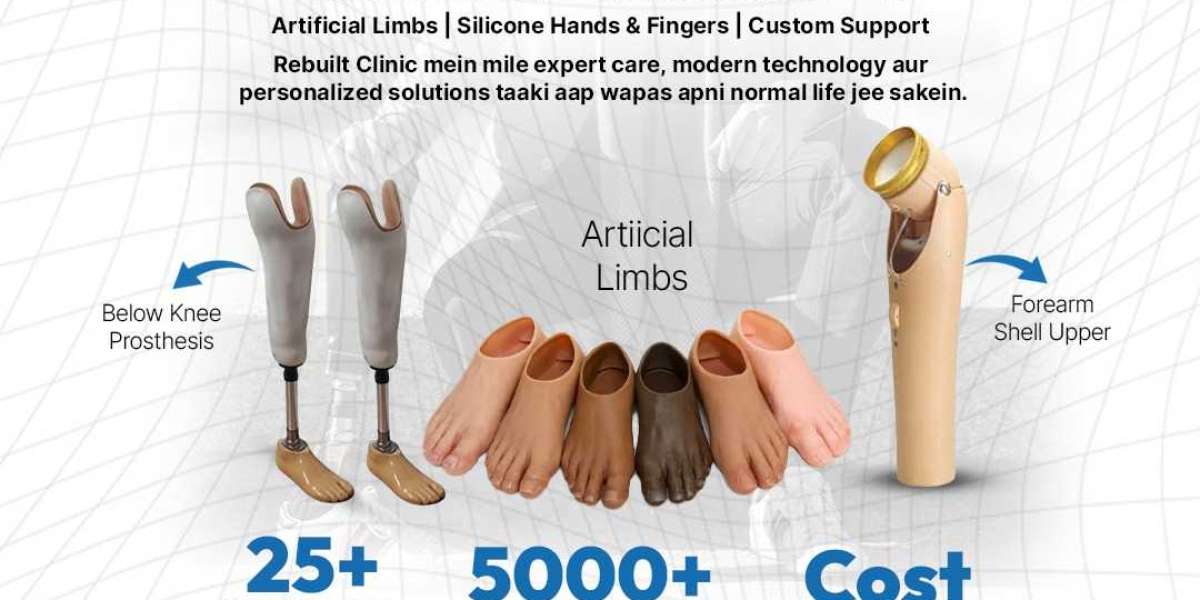Artificial limbs have come a long way from being simple wooden pegs and hooks to becoming highly advanced prosthetics powered by AI, robotics, and smart sensors. Today, they are not just medical devices but life-transforming technologies that restore independence, mobility, and confidence to millions of people worldwide. As we look into the future, innovations in artificial limbs and even concepts of full body artificial limbs are reshaping what was once considered impossible.
In this article, we’ll explore how artificial limbs are evolving, the role of AI and robotics, emerging trends, and what the future holds for prosthetic technology.
Evolution of Artificial Limbs: From Basics to Smart Prosthetics
For centuries, artificial limbs were designed only to replace missing body parts with limited functionality. Early prosthetics focused more on appearance than movement. Over time, advancements in biomechanics, lightweight materials, and engineering gave rise to more functional prosthetics.
20th Century: Mechanical prosthetics allowed basic movements like walking and gripping.
21st Century: Myoelectric prosthetics enabled limb movements controlled by electrical signals from muscles.
Present Future: AI-driven, sensor-enabled, and robotic limbs are making artificial limbs more intuitive and lifelike.
The journey reflects a shift from passive replacements to active, responsive, and intelligent prosthetics.
The Role of AI in Artificial Limbs
Artificial Intelligence (AI) is becoming the driving force behind the next generation of prosthetics. Unlike traditional devices, AI-powered artificial limbs can learn from user behavior, predict movement, and adapt in real-time.
? Key Benefits of AI in Prosthetics:
Improved Mobility – AI allows smoother and more natural movements by predicting walking patterns.
Adaptive Learning – Prosthetics can “learn” from daily activities and adjust for terrain, speed, or posture.
Enhanced Grip Control – For upper-limb prosthetics, AI helps in recognizing different objects and adjusting grip strength.
Seamless Integration – AI-powered limbs can connect with smartphones or rehabilitation apps for personalized progress tracking.
For example, advanced leg prosthetics now use AI to detect whether the user is walking uphill, running, or climbing stairs—offering real-time adjustments for maximum stability.
Robotics: Making Prosthetics More Human-Like
Robotics is the second game-changer in the world of artificial limbs. While AI focuses on intelligence, robotics adds mechanical precision, power, and dexterity.
Modern robotic limbs feature:
Microprocessors that control knee and ankle movements.
Hydraulic and motor systems for strength and smoother motion.
Bionic hands capable of multiple grips, gestures, and even fine motor skills.
Robotic prosthetics are now so advanced that users can pick up delicate objects like eggs or use tools without damage. The aim is to create prosthetics that feel, move, and respond just like natural limbs.
The Concept of Full Body Artificial Limbs
While artificial limbs usually refer to individual prosthetics (arm, leg, or hand), researchers are exploring the futuristic concept of full body artificial limbs—a system where multiple prosthetic parts or even an entire artificial body could be synchronized with human consciousness.
Though still in the experimental stage, this idea is inspired by neural engineering and brain-computer interfaces (BCI). In theory, a person could control an entire prosthetic body with their thoughts.
Potential Applications of Full Body Artificial Limbs:
Severe Injury or Trauma Survivors – Patients who lose multiple limbs could regain full mobility.
Neurodegenerative Diseases – Future prosthetics could support patients with conditions like ALS or muscular dystrophy.
Enhanced Human Capabilities – Beyond medical use, advanced artificial limbs could be used for strength, endurance, or industrial applications.
While we are still decades away from practical full-body prosthetics, research in neuroscience, robotics, and AI is steadily paving the way.
Future Innovations in Artificial Limbs
The future of artificial limbs is not just about functionality but also about integration, personalization, and affordability.
? 1. Brain-Controlled Prosthetics
With the help of brain-computer interfaces (BCIs), users may directly control artificial limbs with their thoughts, bypassing muscle signals.
? 2. Sensory Feedback (Prosthetics That Feel)
Researchers are working on prosthetics with tactile sensors that allow users to “feel” textures, temperature, and pressure.
? 3. 3D Printing for Customization
Affordable 3D-printed prosthetics are making artificial limbs accessible, especially in developing countries.
? 4. Energy-Efficient Robotics
Future designs will focus on lightweight materials and energy-efficient motors, making prosthetics easier to wear for long hours.
? 5. Integration with Wearable Technology
Smart prosthetics will connect with apps, wearables, and cloud systems for real-time health monitoring and rehabilitation.
Challenges Ahead
While the future looks promising, there are still challenges:
High Costs – Advanced prosthetics are expensive and not affordable for everyone.
Accessibility – In developing nations, millions still lack access to even basic artificial limbs.
Training Rehabilitation – Learning to use robotic or AI-powered prosthetics requires time, therapy, and resources.
Ethical Questions – As we move toward full body artificial limbs, ethical debates about “enhancement vs necessity” will grow.
Conclusion
The future of artificial limbs lies at the intersection of AI, robotics, and neuroscience. From bionic arms that can play instruments to robotic legs that adapt to terrains, prosthetics are evolving into extensions of the human body rather than replacements.
The ultimate vision—full body artificial limbs—may sound like science fiction today, but with rapid advancements, it could become a reality in the coming decades. More than restoring mobility, these innovations will empower individuals to live with dignity, independence, and confidence.
Artificial limbs are no longer about survival; they are about thriving, adapting, and redefining human potential.














